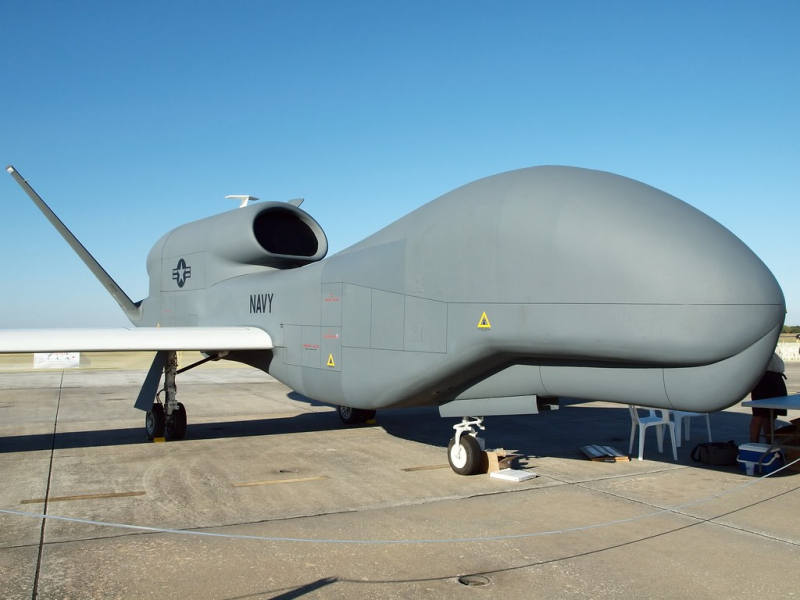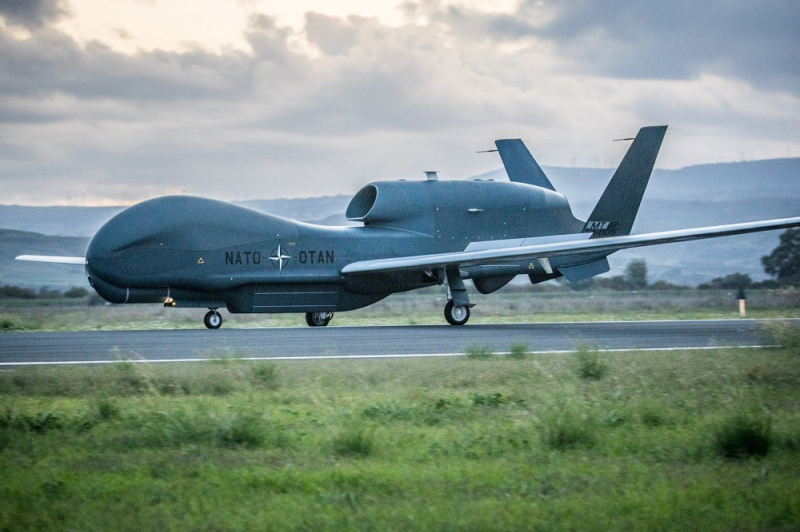MQ-4C / RQ-4 Global Hawk
An aircraft for high-altitude, remotely piloted surveillance, the Northrop Grumman RQ-4 Global Hawk. It was initially developed by Ryan Aeronautical and was referred to as Tier II+. Using high-resolution synthetic aperture radar (SAR) and electro-optical/infrared (EO/IR) sensors with prolonged loiter periods over target areas, the RQ-4 offers a comprehensive overview and methodical monitoring. It can cover an area the size of South Korea or Iceland about 40,000 square miles (100,000 km2) of terrain in a single day. The United States Air Force runs the Global Hawk (USAF). It serves as a high-altitude, long-endurance (HALE) platform that supports forces engaged in global military operations by providing a range of intelligence collection capabilities. The USAF claims that the aircraft's increased surveillance capabilities enable more accurate weapon targeting and improved friendly force protection.
Due to cost overruns, the original 63 aircraft acquisition plan was reduced to 45, and in 2013 it was suggested that the 21 Block 30 signals intelligence variants to be put on hold. Each of the first 10 airplanes had a flyaway price of $10 million in the year 1994. This amount increased to US$60.9 million by 2001, and by 2013 it had increased to $131.4 million (flyaway cost). The Global Hawk was transformed into the MQ-4C Triton maritime surveillance platform by the U.S. Navy. To test their maritime surveillance capabilities, the US Navy received two Block 10 aircraft, codenamed N-1 (BuNo 166509) and N-2 (BuNo 166510). Prior to relocating to Naval Air Station Patuxent River in March 2006 for the Global Hawk Maritime Demonstration (GHMD) program, run by Navy squadron VX-20, the initial prototype underwent brief testing at Edwards Air Force Base.
In the US Navy's Broad Area Maritime Surveillance (BAMS) UAV competition, Northrop Grumman submitted an RQ-4B derivative. The Navy awarded a US$1.16 billion contract to Northrop Grumman's RQ-4N on April 22, 2008, according to an announcement. The RQ-4N was formally renamed the MQ-4C in September 2010. The main area where the Navy MQ-4C and Air Force RQ-4 diverge is in their wings. The Triton can soar to 50,000 feet (15,000 meters) in order to see a large region and can descend to 10,000 feet (3,000 meters) in order to further identify a target, whereas the Global Hawk maintains its high altitude while conducting surveillance. The Triton's wings are constructed specifically to withstand the strains of rapidly lowering altitude. The Triton's interior wing construction is substantially stronger and includes extra features including anti-icing capability and impact and lightning strike protection, despite having wings that seem identical to those of the Global Hawk.
Cost per unit: $605.9 million












